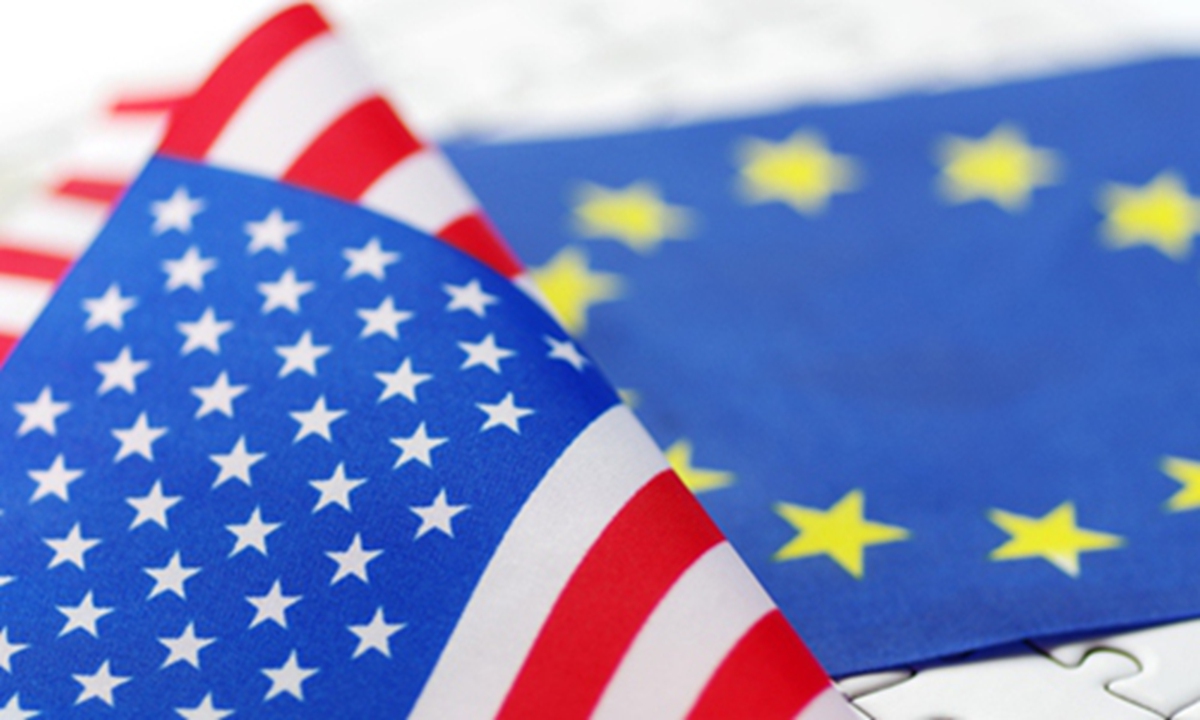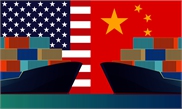
Photo: IC
While the US and the EU seem to have taken an important step toward a truce on their trade war, reaching common ground on passing the buck to China is not the right way to resolve trade disputes, and is a worrying indication of lack of sincerity from both sides.In a joint statement on Monday, the US and the EU announced to partner to "hold countries like China that support trade distorting policies to account."
The joint statement, which was issued by the US Trade Representative Katherine Tai, US Secretary of Commerce Gina Raimondo and European Commission executive vice-president Valdis Dombrovskis, is intended to focus on their latest achievement on a partial truce over their trade frictions, which was sparked by tariffs imposed under the Trump administration.
As the two sides will start discussions on addressing global overcapacity in steel and aluminum, the European Commission said it would suspend a planned set of retaliatory tariffs on some US goods for six months to allow the two sides to address their problems.
Had both sides not made the joint statement which amounted to little more than a political stunt criticizing China's trade practices, the move would have been a constructive step toward economic and trade cooperation.
Perhaps trade representatives of both sides may believe that a truce in the US-EU trade war could be a predicate for establishing a united front against China, but in fact, a misleading shift of their focus on China may only underscore the lack of confidence and motivation in negotiations on actual trade problems between the two sides, which may be lengthy and may lead to a new round of ugly recriminations.
This is because the structural conflict in US-EU trade has become so severe and deeply-rooted that it is basically impossible to ease the tensions by simply addressing the excess metal capacity.
If anything, both the years-long battle over aircraft subsidies and the frictions over digital taxes may serve as the best proof of the ongoing and heated rivalry between US and EU industries.
There used to be a period when Western politicians tried their best to prevent such trade structural conflict from escalating, but during the Trump era, the US chose to resort to tariffs, resulting in the tit-for-tat levies between the two sides and laying bare their fierce competition in industries and trade.
At present, the US still maintains its tariffs of 25 percent on steel and 10 percent on aluminum from the EU, while the EU also keeps its tariffs on $3.4 billion of selected US goods.
Although it is widely acknowledged that the tariff war is mutually destructive, it is highly questionable whether either side could make any substantial concession by rolling back the tariffs at a time when their domestic or regional economies still face great stress.
If the US and the EU do not focus on resolving the problems and still try to pass the buck to China using underhand tactics, then they are playing the wrong game.
China firmly upholds trade multilateralism and is a heavyweight trading partner of more than 100 countries and regions. Any attempt to discredit China's hard-won trade achievements is doomed.



